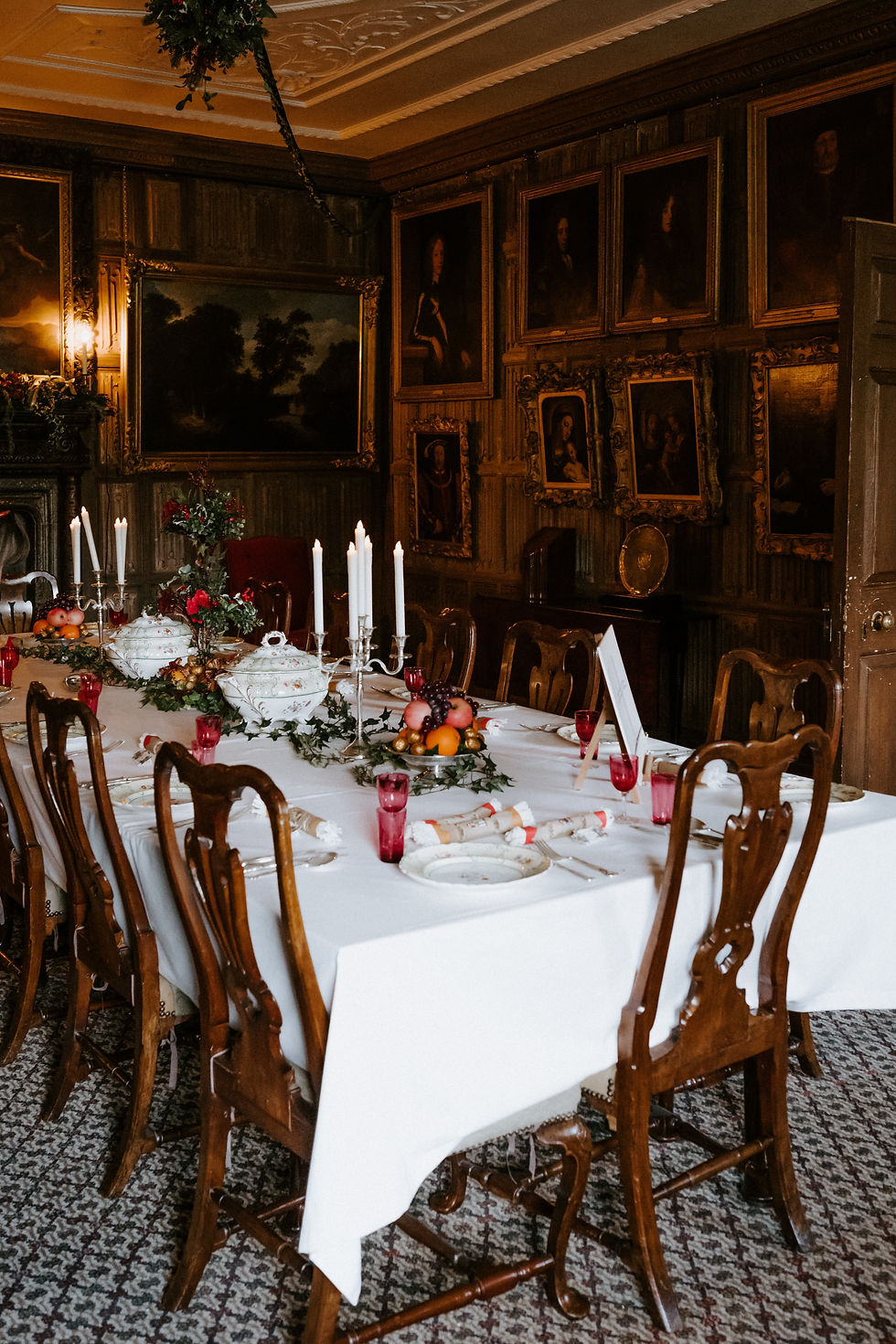Build your own Parquet Dining Table (because you are someone who can do hard things)
- Mary G

- Oct 22
- 5 min read
Updated: Nov 2

Step 1: Went to a Store …probably wise to say no names, just know that it rhymes with Shmottery Shmarn
I saw a table I adored. And I mean adored. It was just so… rainy day, hot coffee, parquet with like pomegranates and hurricane candles and strewn linens ...you know the type...beautiful.

I imagined hosting elegant dinner parties around it, I imagined reading newspapers around it as my family created art and got along…
I even started to rationalize the price, because I hail from a time when my mother and her set spent actual money on dining room furniture. It was normal for them.

So, I was on board, but then something stopped me. There was a 250.00 delivery fee. Seems dumb, I know but, I have a small suv and the warehouse is in driving distance but they would not budge and the extra 250.00 made we walk out in principal. Silly? Maybe. But I knew I could make it myself, so I went home.
Step 2: Decided to make it myself
I had no prior table-making experience. But confidence is everything and I needed a project.
Step 3: Bought Local walnut from a lumber yard
I found a lumber yard in my town, which interestingly enough is in a sort of river valley…who knew?, but…turns out we are known for our Walnut trees so I bought some beautiful walnut planks. At this point I had wood and ambition — which was enough to make me press on.
Step 4: Joined a Makerspace, befriended new people and new tools

Next thing I did, was to join a local makerspace, mostly for access to a planer and table saw. This is a monthly subscription, which I intend on renewing in my retirement, but for the month that I needed it, the people there were extremely helpful and welcoming. I loved going and I enjoyed some serious quality time turning uneven lumber into straight, uniform pieces. It was loud, dusty and it triggered my asthma, but still?...oddly satisfying.
Step 5: Bought a miter saw and two workhorses
A real power move — in both the metaphorical and electrical sense. Set them up at home, measured out my design, and calculated exactly how many pieces of each size I’d need. Then re-measured.
Step 6: researched parquet patterns

Discovered there are a lot of parquet options. Spent a questionable amount of time arranging wood offcuts on the floor. Eventually settled on a pattern that looked complicated enough to impress people, but not so complex that I’d regret everything….also I was a little limited in this effort since I had already made my cuts…there were only so many patterns that I could make repeat with my chosen dimensions…but I worked it out.
Step 7: Bought a ¾" MDF sheet from Home Depot (35" x 70")
This would serve as the tabletop base. Had it cut to size in-store by someone who definitely judged my optimism, but kindly said nothing. Home store people are a great great breed…super helpful and usually adventurous types who will teach you what you need too know if you just ask a simple question like, “what size mdf would YOU get if YOU were making a table?” They get it.
Step 8: Laid out some patterns
Started dry-laying the pieces on the MDF, letting them overhang the edges. Felt like solving a jigsaw puzzle, except all the pieces were made by me and none of them wanted to cooperate.


Step 9: Settled on my choice and started fixing the walnut pieces in pattern to the mdf!
I used wood glue and a brad nailer (that I got for m’birthday!) to attach the wood. I just proceeded as though I was building a mosaic, only out of wood instead of tile. At first, I tried to nail diagonally through the side of each piece, but THAT didn’t work for me. (split wood) SO, I turned the pressure way up on the nail compressor and sunk the nails deep into the wood from the top. I knew I could fill these tiny holes later with the wood filler.



Step 10: First sand
Light sanding pass to bring everything to the same level. Started to see the potential…exciting.
Step 11: Trimmed the edges with a circular saw
Used a straight edge to guide the saw and cleanly cut off the overhanging wood. Very satisfying. Slightly terrifying. Probably will not get into the habit of using the circular saw…in the basement…alone…when no one is home.
But it is over now and I am fine and the edges are straight, so….
Step 12: Filled the gaps and tiny holes
Mixed wood glue with the walnut sanding dust to create a filler that matched the wood grain and packed it into the seams and the little nail holes. This worked every bit as effectively as the man on the video said it would. I just basically grouted the parquet like tile…



Step 12: Sanded again
Step 13: Sanded again
Step 14: Sanded again
Three more rounds. Not because I’m obsessive. Because sanding is 80% of woodworking and no one tells you this until it's too late.
Step 15: Stained the table
Moment of truth. Took a risk on a stain color. I did try a few shades on old cast off pieces of walnut so I had somewhat of an idea, but there were so many variations in the wood of the table that I was a little hesitant. I’m very pleased though. I salvaged some walnut, caned chairs (another post) and I kind of need the pieces to work together. The chairs have a richness that I was trying to achieve with the table…and I did! Mild surprise, quiet satisfaction.

Step 16: Finished with orange oil
Multiple coats. Buffed between each one. Smelled vaguely like a citrus grove. Not essential, but it made me feel like a woodworker…all natural and carpenter like…super cool, like I knew what I was doing.
Step 17: Considered hand-forged iron legs, bought IKEA instead
Looked longingly at a handcrafted iron base that cost as much as a used car. Opted for IKEA legs. Functional, affordable for now. For. Now. But stay tuned. I’ll find a way to get that base…it’s gorgeous (below) and belongs with this table.

One victory at a time though. The table is done.
Final Result
A custom walnut parquet dining table. Made by hand, finished with far too much sanding, and assembled without the help of any overpriced lifestyle brands. Total cost: less than the store-bought version. Emotional cost: moderate. Regrets: none.
Would do again. Probably won’t for a while.







Comments